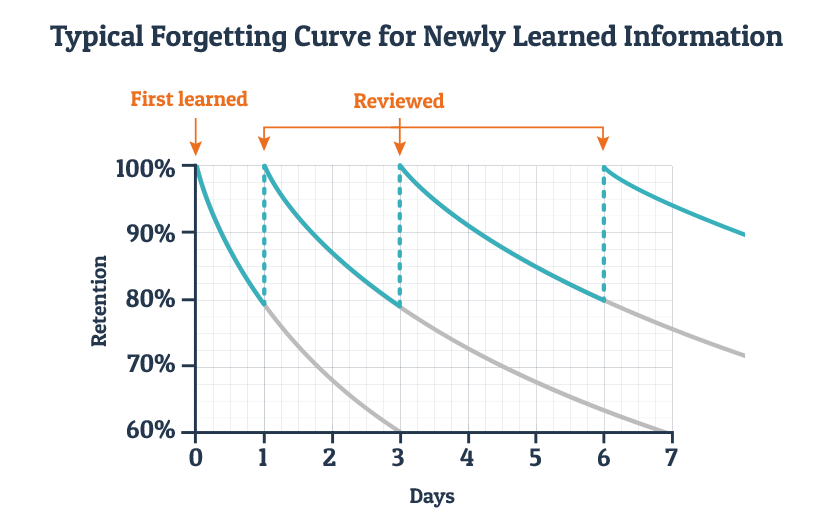Flashcard app comparison: Anki vs Quizlet
Flashcards should be a staple part of any students’ study routine. You can use them to memorize and drill anything from vocabulary to verb conjugations or lexical chunks. The trick is to stick with it and review at regular intervals so you don’t forget all that useful info. (Learn more about how our brains memorize new words and retain information, and how to harness this in my previous post here.)
The most simple flashcards have a word written in your first language on one side and the translation in your target language on the other side, but flashcards have come a long way from the homemade handwritten variety. Now, there are loads of great apps with lots of cool features which you can use to review anytime, anywhere, on the go. Much more convenient than lugging a stack of cards to the library with you.
But, which app is right for you? In this blog post, we look at the pros and cons of 2 flashcard apps - Anki and Quizlet. Keep reading to find out more.
At A Glance - The Pros & Cons
For a quick overview, check out the table below to see the best and worst features of Anki and Quizlet. We took into account the following factors when comparing:
- Interface and Ease of Use: How easy to navigate is the app? Is it intuitive for users?
- Study Modes & Games: How many different modes does it have? What types of games are available?
- Ease of Creating Decks: How hard/time-consuming is it to make your own flashcards?
- Built-In Spaced Repetition: Is this app a long-term memory
- Price: How expensive is it?
- Compatibility: Is it available online, on Android or on iOS?
We've outlined Spaced Repetition in a separate row because it's super important when it comes to learning vocabulary. This is renowned method to memorize hundreds of words in a matter of weeks.

Anki
Download: On the App Store / On Google Play
A long-standing favorite, Anki uses spaced repetition to help users memorize and retain information but is a little less user-friendly.
As far as its interface goes, Anki keeps things simple. It’s pretty intuitive but sometimes a little confusing. At first glance, you’re not likely to understand what a filtered deck, for example, is.
Creating a flashcard in Anki is a bit tedious -- you have to look up translation or a definition you want to put on the backside yourself.
Anki has one standard study mode - card flipping. You decide how many cards you want to study per day. Then, Anki will display a word, you check if you’re correct by hitting “show answer”, and then categorize the word again, hard, good or easy which corresponds to a time interval of 10 minutes, 4 days, 7 days or 10 days when you will next be tested. Anki then keeps track of which cards need to be reviewed when so that you won’t forget any. That’s actually a pretty neat feature. But sometimes it gets a bit repetitive.
Creating a new deck in Anki is definitely more labor intensive than Quizlet. You’ll need to add all the info yourself, one flashcard at a time, which can be time-consuming for languages with different alphabets, characters or accents you’re not familiar with. You can make text-based cards with words or cloze passages but the cloze feature is far from intuitive. The good think about Anki is it’s highly customizable. The bad thing about Anki is, you’ll have to invest some time to learn how to customize your own flashcards.
Anki does, however, have a large database of public user-created decks to choose from which list user ratings, how many cards they have and what type of content they contain.
Anki is free for Androids but the IOS version will cost you $25 for lifetime use. You can also use the web version of Anki for free - https://apps.ankiweb.net/.
Quizlet
Download: On the App Store / On Google Play
Easy to use and super intuitive, Quizlet has a range of study modes to choose from. Learn material first and then review using matching games, true or false or writing tests.
The free version of Quizlet doesn’t use spaced repetition so it doesn’t have the same long-term focus, however, for $20 a year, you can get Quizlet plus which does. You can also add your own images and audio to your flashcards if you upgrade to the premium version.
Creating new decks of cards is straightforward but can be a little time-consuming seeing as you need to create the content for both sides of your cards. You can easily copy and paste vocab and foreign characters into new card sets without any issues. Of course, this is easier using a web browser on your computer. Quizlet will even automatically add in the audio which is a definite plus. This feature is supported by 18 different languages.


If you can’t be bothered to make your own deck of cards, there are plenty of user-generated options to choose from but quality varies a bit so be prepared to invest a little time to find the best materials. You can easily save decks in personalized folders on your profile page.
